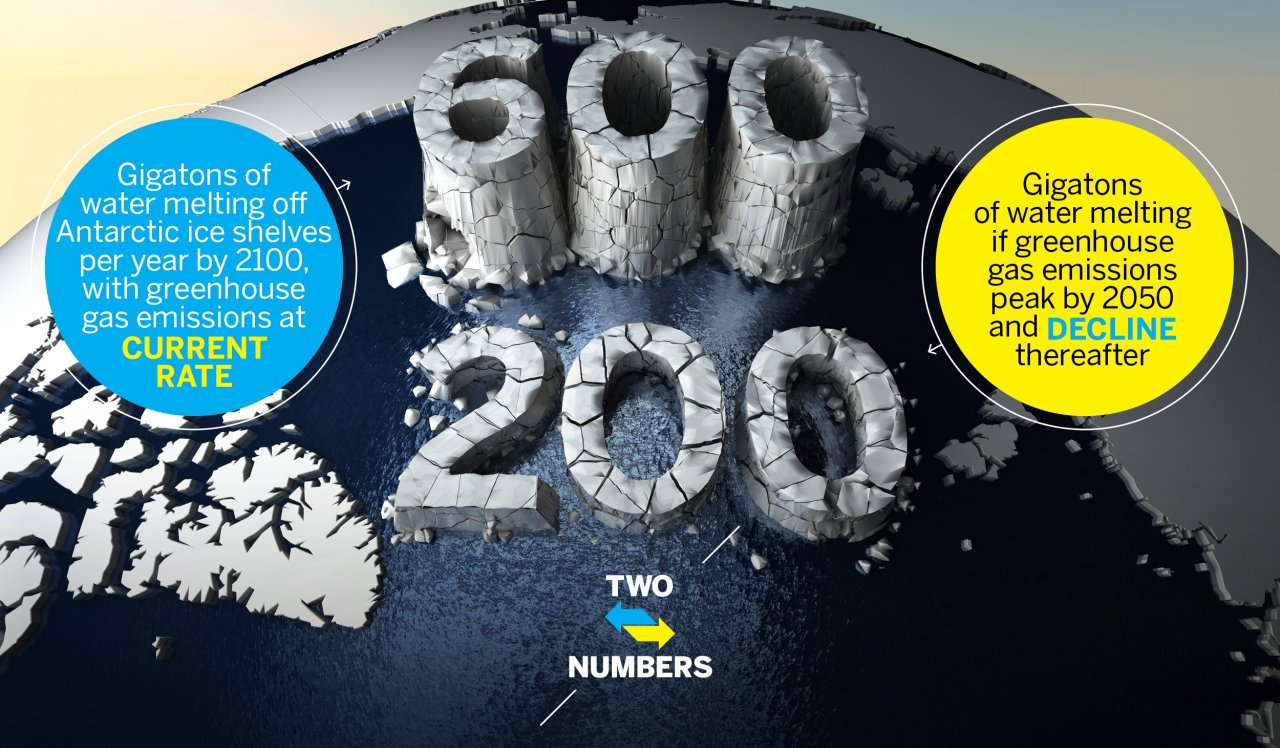Later this year, world leaders will come together for the United Nations to discuss how to save the planet from catastrophic climate change. New research out of the Woods Hole Oceanographic Institute gives them another metric to see exactly how much is at stake. A paper published in October predicts that the surface melting of ice shelves in Antarctica will double by 2050—whether or not emissions change. But by 2100, our climate policy decisions will be the difference between the Antarctic ice shelves disappearing into the sea or not.
Ice shelves are massive, floating plateaus of frozen seawater that jut out from the continent and function as blockades, holding back the giant continental ice sheets. In their absence, the glaciers on the continent would accelerate their march into the sea. According to the research, under a business-as-usual emissions scenario, the next 85 years of warming could bring a melt rate high enough to trigger the loss of ice shelves across the continent. "Imagine you have a sink full of water, and you remove the drain plug. The ice shelves are the drain plug," explains Luke Trusel, a glaciologist at Woods Hole and lead author on the study.
Trusel and his colleagues found that if emissions continue at the current pace, Antarctica's ice shelves would be losing around 600 gigatons of melt water per year by 2100. "That's the equivalent of eight years of Niagara Falls running continuously," he says. "We're talking about a completely different Antarctica." At that point, the melt rate would be at or above the point where ice shelves have historically destabilized and collapsed, like the Larsen A and Larsen B shelves, which collapsed abruptly in 1995 and 2002, respectively, shocking researchers.
Related: As Sea Ice Melts, Antarctic Seafloor Life Flourishes
Already, scientists warn that West Antarctica, which NASA calls the "single largest threat of rapid sea level rise," may be inherently unstable. Much of the sheet is anchored on a bed below sea level, making it vulnerable to ocean currents that deliver warm water to its base, melting the ice. Research published last year found that an ice sheet in the Amundsen Sea region of West Antarctica is hemorrhaging a volume of ice equivalent to Mount Everest every two years. The Amundsen Sea region, which is a sliver of the mass of West Antarctica, contains enough ice to raise global sea levels by 4 feet. If the entire West Antarctic ice sheet disappeared, it would raise the global sea level by roughly 16 feet. Destabilizing the region's ice shelves would, no doubt, threaten to speed that process.
But, Trusel explains, if world powers commit to peaking global emissions around mid-century and reducing them steadily thereafter, this cataclysmic scenario could be avoided. Rather than shedding 600 gigatons of water per year, Antarctica's ice shelves would lose just over 200 gigatons per year, staving off total collapse.
It's a highly feasible goal. (In fact, Trusel calls this a "middle-of-the-road scenario" for climate policy, since some experts and governments have advocated for much faster and steeper peak-and-decline emissions scenarios.) In other words, this apocalyptic ice melt story has a silver lining. Sort of.






















